Although plenty of beautiful plants exist worldwide, few are as spectacular as the Philodendron Pink Princess. As its name suggests, it boasts bold splashes of bubblegum-colored variegation set against dark green leaves. Given this unusual coloration, it’s no surprise that demand for the Pink Princess runs high.
And while it’s undeniably good-looking, another reason for the rampant popularity of the Princess is how easy it is to look after.
Investing in rare and unique plants can be risky, especially as they generally come with a significant price tag. But the Philodendron Pink Princess has a hugely high success rate in the home, making it a sound choice for avid collectors.
In this article, I’ll take you through everything there is to know about the fascinating Philodendron Pink Princess, from how much they cost to how big they grow. I’ll also detail some controversy around ‘fake’ pink plants and how to distinguish if your Princess is the real deal. Ready? Let’s dive right in.

Table of Contents
Why is the philodendron pink princess so expensive?
The Philodendron Pink Princess is both challenging to produce and highly sought-after, with these factors directly contributing to its hefty price tag. Indeed, consistent demand by collectors and consumers means that suppliers can charge high fees even for juvenile plants.
And they don’t appear on the market too often, as only a few thousand are currently produced each year.
Thanks to social media platforms like Instagram, the Philodendron Pink Princess is well and truly enjoying its moment in the sun. Those who have them love to show them off, and those who don’t seek them out.
While they propagate well, their production can be slightly more complex than is the norm for philodendrons, especially as their selling point is their bold pink variegation.
You see, unlike many naturally variegated philodendron varieties, the Pink Princess is lab-bred from tissue cultures and retains its bright color in its DNA. This means that there is no guarantee of exactly how pink a Princess will turn out until it starts to mature, a problem further complicated by the fact that they remain primarily green in their juvenile stages.
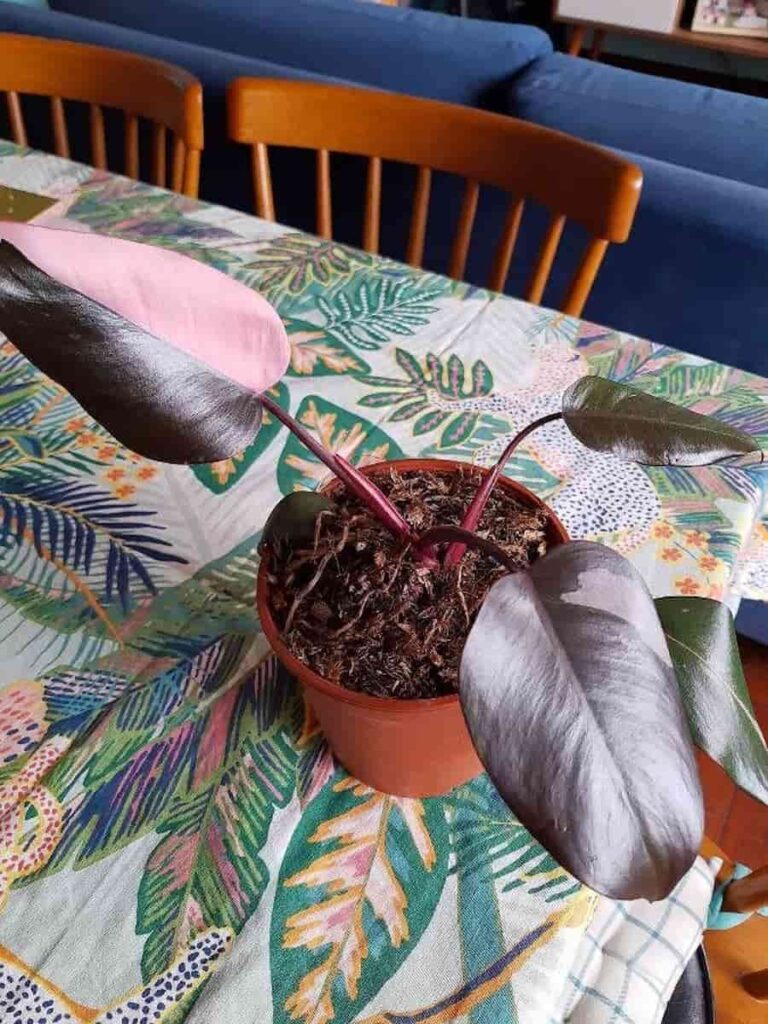
Consequently, each year, producers worldwide end up with thousands of plants devoid of the Pink Princess’ beautiful hues, which they cannot sell or market as legitimate specimens (even though they technically are).
Those that show promising patches of pink from a young age are quickly swept up – making the demand for this unique beauty consistently high and greater than the market can account for.
Regarding philodendron propagation, it is true that the Pink Princess is known to propagate quite well. However, given that its pink leaves don’t contain as much chlorophyll as its greener leaves, they are the cuttings unlikely to take. And by default, the resulting juvenile plants tend to lean more toward solid green DNA than variegated green.
How much does a pink princess cost?
The Philodendron Pink Princess definitely falls on the higher end of the price scale when it comes to indoor plants, given its scarcity. A juvenile plant can cost anywhere from $70 to $100, and mature specimens fetch much more – up to $500.
Occasionally, online merchants and specialist breeders may sell cuttings for as little as $45, but these are without roots or planters, and there is little guarantee they will survive into adulthood.
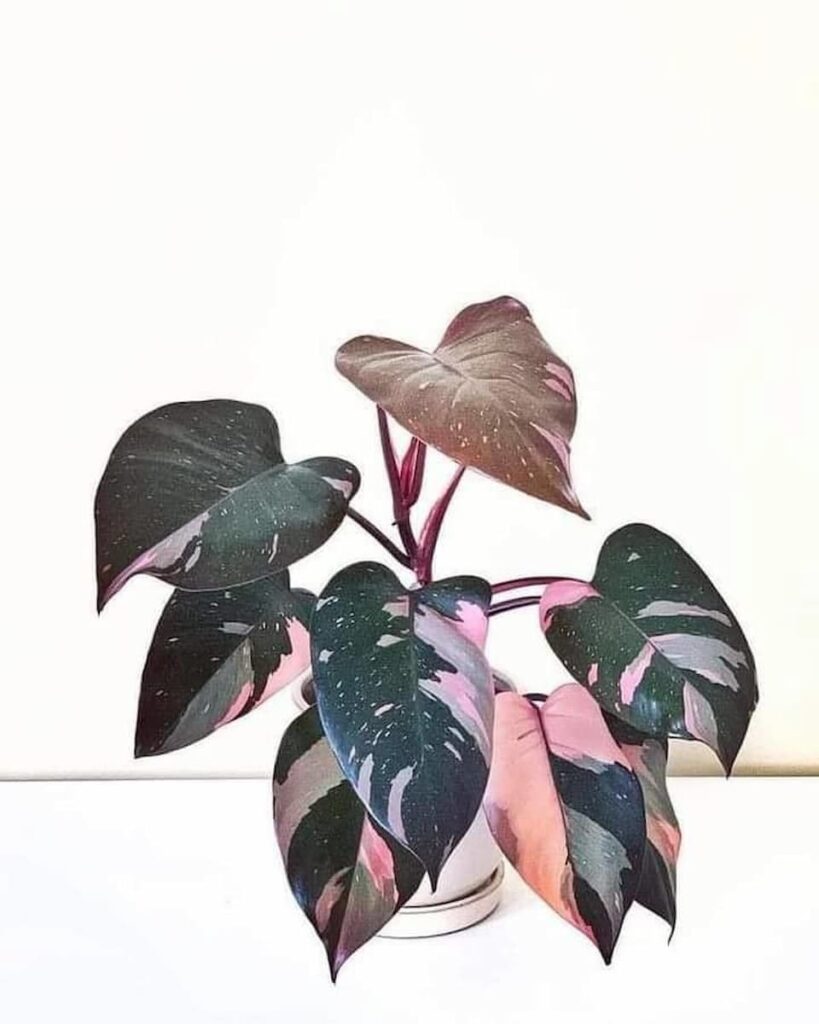
Can you grow philodendron pink princess seeds?
Though Philodendron Pink Princess seeds do appear for sale from time to time, the chances of them germinating with variegation are basically zero to none. This is because their signature color results from modified tissue culture (which is often unstable) and doesn’t pass on to their seeds.
If Pink Princess seeds do take and grow, they will most likely revert to solid green, and you’ll be left with a regular philodendron rather than a Princess.
How to care for a philodendron pink princess
The best way to care for a Philodendron Pink Princess is to try and emulate its natural, tropical environment. This involves providing it with bright, indirect light, plenty of warmth and humidity, well-draining soil, good hydration, and seasonal feeding. Occasional pruning and cleaning also help your Philodendron Pink Princess’ overall well-being.
Philodendron Pink Princess make great houseplants, and if you have any hesitation about their care, worry no further. These gracious green beauties are low-maintenance and straightforward in terms of their needs, making them perfect for even beginner plant parents.
Bearing in mind that Philodendron Pink Princess are tropical plants, the best environment you can offer them is one where they’ll have a sunny spot with lots of light, relative humidity, and plenty of moisture.
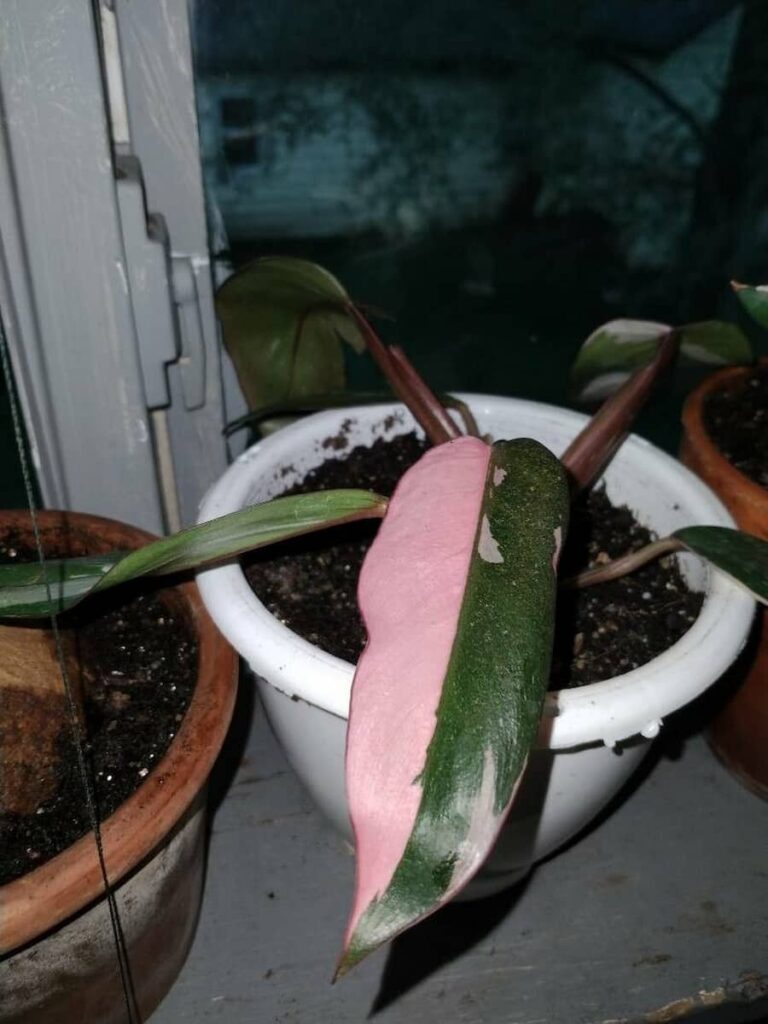
In good news, most homes are already set up for this with East and South-facing windows and a generalized humidity level of around 50%. To supplement the rest of their care needs, you just need to ensure your Philodendron Pink Princess stays hydrated, is fed with both good soil and that you occasionally fertilize your philodendron.
In the following sections, we’ll look at Philodendron Pink Princess care in greater detail to equip you with everything you need to help your houseplants thrive.
Best soil for Philodendrons
Miracle-Gro Tropical Potting Mix
Light and well-draining (perfect for avoiding root rot) while being packed with just the right nutrients – that will feed your plant for up to six months. The best soil for keeping your philodendron healthy and strong.
How much light does a philodendron pink princess need?
Philodendron Pink Princess prefer at least six to eight hours of bright, indirect sunlight each day. As their leaves can be vulnerable if they receive too much light, keep an eye out for any signs of sunburn on your Philodendron Pink Princess’ leaves, such as yellowing leaves or brown spots appearing.
Most (if not all) plants depend on sunlight energy to grow, and Philodendron Pink Princess are no different. Native to tropical America, they’re accustomed to dappled light from the jungle canopies above them, which you can try to mimic in the home with clever positioning.
In the winter, when it starts to cool down, and there is less indoor sun available, a Philodendron Pink Princess’ light needs can be augmented with a bit of time spent outdoors on a sheltered patio or balcony. The fresh air will do them good, too.
Find out more: Philodendron Light Needs: The Ultimate Guide
What is the right temperature for philodendron pink princess?
Your Philodendron Pink Princess will thrive in temperatures between 75°F and 85°F (23°C to 29°C). While they can survive at lower temperatures than this, don’t let them stay for too long anywhere less than 65°F (18°C) as your plant may not survive.
Clearly some plants, like Philodendron Pink Princess, like it hot. However, the real kicker is ensuring your Philodendron Pink Princess are placed in an area with mid-to-high humidity.
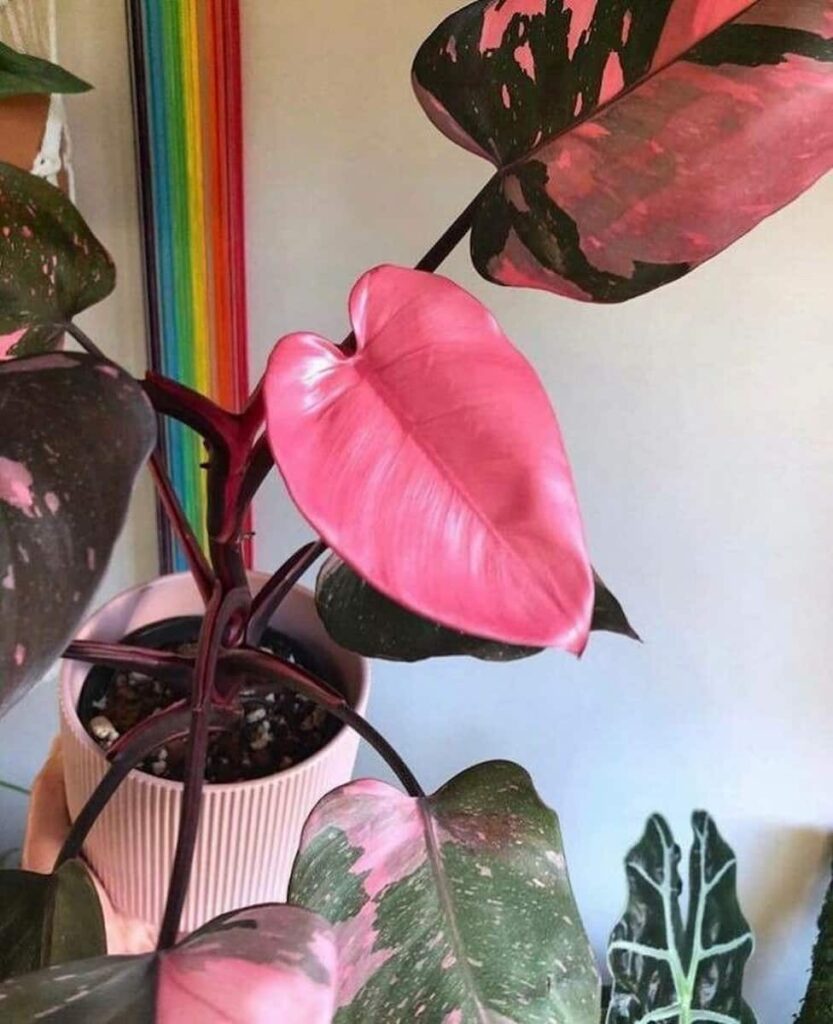
When should I fertilize my philodendron pink princess?
Philodendron Pink Princess likes some fertilizer every now and again. In fact, they do their best when they are fed twice a month during their active growing season, which is the spring and summer. However, you shouldn’t fertilize your Philodendron Pink Princess during its dormant period in the cooler months.
This is because feeding the plant during this time can interfere with its natural growing cycle.
Overall, though, occasional feeding with a balanced fertilizer is greatly beneficial for Philodendron Pink Princess, especially at the start of their growing seasons in the spring and summer months.
Best fertilizer for Philodendrons
Jack’s Classic 20-20-20 All Purpose Fertilizer
A great fertilizer with the perfect balance for your philodendron. Simply dissolve in water and feed your plant to watch it thrive.
If you think about it, these jungle-dwellers are used to all the rich, dense nutrients they have access to from the forest floor, which can’t be substituted by typical potting soil. An all-purpose liquid fertilizer at half strength is a good way to replace their natural feeding schedule, providing them with an extra dose of energy for new growth.
What are the best humidity levels for a philodendron pink princess?
Philodendron Pink Princess prefer humidity levels of around 65% to 80%. Given that they are native to tropical Central and South America, they thrive in humidity conditions similar to their natural habitat. However, most homes won’t reach these levels, so you may need to boost this for your Philodendron Pink Princess to thrive.
Houseplants that receive adequate amounts of sunlight daily generally don’t require supplementary humidity, particularly if you consider most homes fall in the 40% to 50% range. However, with their tropical inclinations, Philodendron Pink Princess can benefit from a little extra care in this regard.
The easiest, in my opinion, is to invest in a small plug-in humidifier. Alternatively, you can rest your Philodendron Pink Princess on a damp pebble tray, making sure not to let their roots touch the water.
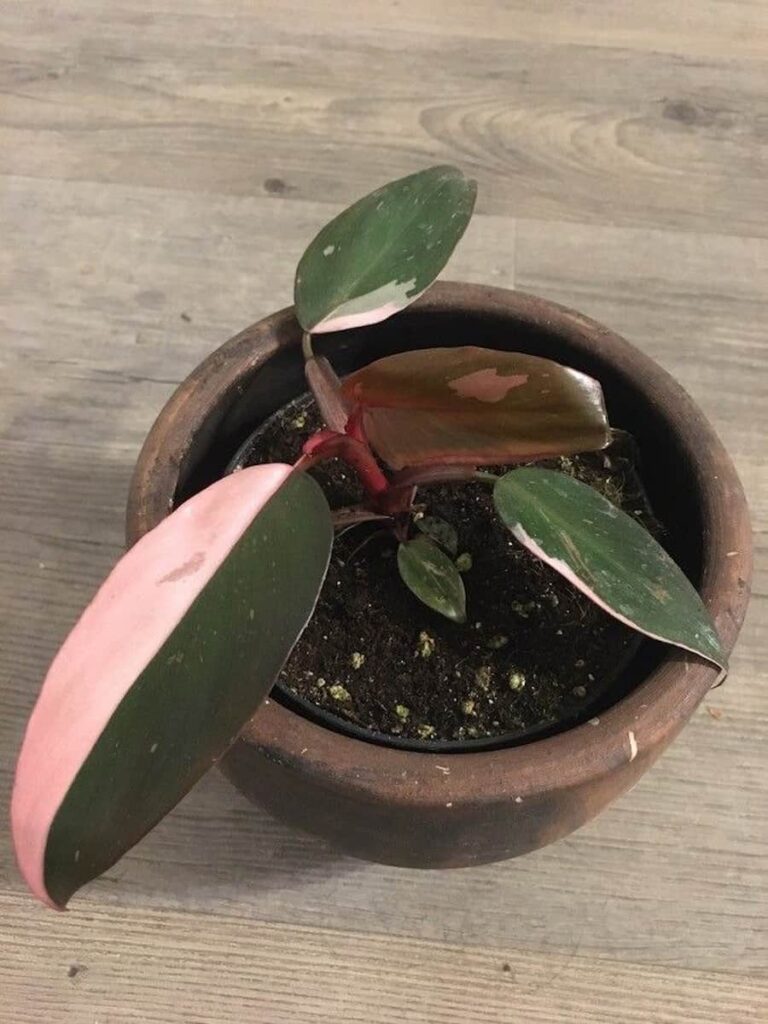
Alternatively, if you have a whole collection of houseplants, cluster them together so they can benefit from each other’s transpiration processes. It has the added benefit of looking great too!
What soil is best for philodendron pink princess?
A Philodendron Pink Princess’ soil mix should be loosely clustered, nutrient-rich, and well-draining. The high nutrient level emulates its natural habitat, where plant material in the rainforest falls onto Philodendron Pink Princess and nourishes them. Having light and airy potting mix helps to avoid the soil staying too soggy, which can lead to root rot.
While many Philodendron Pink Princess varieties have aerial roots as well as ground-dwelling (terrestrial) roots, they receive the bulk of their vitamins and minerals from their soil, making it an essential part of their fundamental care.
Top pick: My preferred soil for Philodendron Pink Princess is the Miracle-Gro Tropical Potting Mix (check the latest price here).
It’s very well draining and will feed nutrients to your Philodendron Pink Princess for up to six months. For a tropical plant like the Philodendron Pink Princess, it’s got everything you need.
Buying pre-blended Philodendron Pink Princess soil from most garden centers is a simple option. Alternatively, you can easily mix your own by combining potting soil with chunky bits of bark (grab some here) and moisture-retentive perlite (get it here).
If you’re buying your Philodendron Pink Princess pre-potted, they’ll likely arrive in appropriate soil from the get-go. Even so, you’ll need to replace their soil every 18 to 24 months to prevent a build-up of salts or eliminate any beasties and creatures like pests, fungi, or bacteria, so make sure you’re replanting them in the best soil for philodendrons so they continue to thrive.
Indeed, this is a good maintenance practice for all houseplants, not just Philodendron Pink Princess!
How often should you water philodendron pink princess?
You should water your Philodendron Pink Princess when the top two inches of its soil has dried out, which you can test by sticking your finger into your plant’s potting mix. In summer, this will be around once per week, but may be less frequent in the cooler months.
It’s always good to have a watering schedule for your plants, but with so many factors (like season and sunlight) at play, I prefer to meet my Philodendron Pink Princess’ watering needs as required – by waiting for their top inch of soil to dry out before hydrating.

The reason for this is that the leading cause of fatality in Philodendron Pink Princess is root rot, which they tend to contract from overly soggy soil or from standing in pooled water. As they’re pretty drought-tolerant, it’s best to err on the side of caution and only water philodendrons as they need it rather than strictly once-per-week.
That said, when you do water them, a hearty dose of moisture is great, provided it doesn’t make their soil soggy and heavy, which weighs down on their root systems.
Should I prune my philodendron pink princess?
You should prune your Philodendron Pink Princess from time to time as part of their regular maintenance, with spring being the best time of the year to do this. Removing dead foliage or browning stems will allow robust leaves and vines to draw in more sunlight and stop your plant from wasting energy.
Just like humans shower, cut their hair, and clip their nails, Philodendron Pink Princess can do with occasional grooming, especially when it comes to eradicating old or dying growth. Fortunately, trimming your philodendron really isn’t hard to do.
When it comes to cleaning, remember that each large leaf of your Philodendron Pink Princess is full of sunlight receptors that are easily blocked by dust or grime. Wiping down your leaves with a damp cloth keeps them clean and free to function at their best.
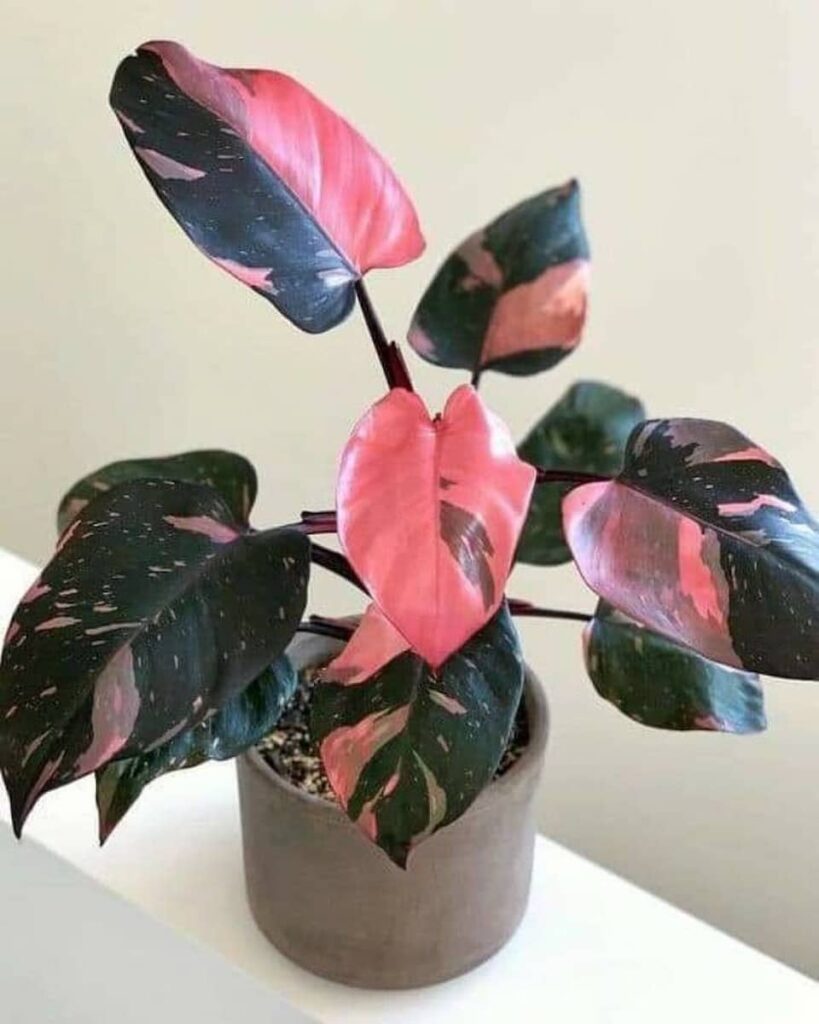
When should I repot my philodendron pink princess
The Philodendron Pink Princess is not a plant that needs to be repotted regularly, with it often only needing to be transplanted every two to three years. With that said, however, you should repot your Philodendron Pink Princess if you see roots growing out of the drainage holes.
In fact, this plant does well when it is rootbound. That said, when you do transplant a Philodendron Pink Princess, do so in spring before the plant starts to produce new growth, and select a pot that is about 3 sizes larger than the current pot.
Alternatively, you can wait until fall to perform the transplant.
Find out more: 7 Simple Steps to Repot Philodendrons (+ When To Do It)
Is a philodendron pink princess hard to care for?
If you’ve successfully obtained a Philodendron Pink Princess, you’ll be pleased to learn that they are super easy to care for. They enjoy a consistent regime of regular hydration and occasional feeding, high levels of humidity, and plenty of indirect sunlight. Top-quality, aroid soil is also recommended to keep up their nutrient levels.
Like most Philodendrons, the Pink Princess is a breeze when it comes to maintenance. As a tropical plant, it does enjoy warmer climes, but that is not to say that it can’t fare perfectly well in a cooler home with a bit of supplementary humidity. For this purpose, plug-in humidifiers or damp pebble trays work great.
Regarding watering, philodendrons like the Pink Princess are most at risk of overhydration, which can cause long-term problems like root rot. To this end, it’s always better to err on the side of less-is-more hydration, topping up your plant only when the top inch of soil is dry rather than every 7 to 10 days, as most houseplant lovers recommend.
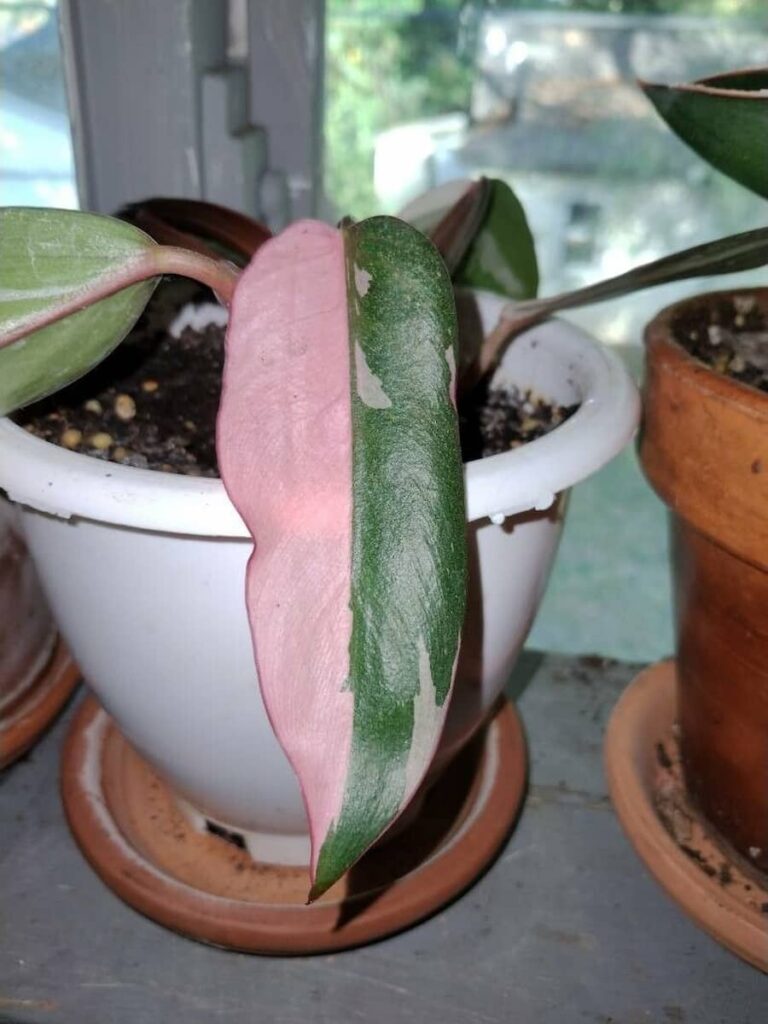
Sunlight is another crucial ingredient to keeping your Pink Princess happy and healthy. 6 to 8 hours a day of bright but indirect sunlight is optimal, bearing in mind that it has less chlorophyll than an all-green plant and thus needs extra energy from the sun.
That said, its delicate pink leaves can scorch, so keep it well away from direct, harsh rays.
Finally, make sure you choose a high-grade, nutrient-rich soil to plant your Princess in so that it has lots of access to vitamins and minerals. Good air circulation, aided by orchid bark and perlite, will keep your philodendron’s roots healthy, while seasonal slow-release fertilizer in spring and summer gives it a boost when it’s in its prime growing months.
How long do pink princess philodendrons live?
Experienced Pink Princess growers state that they thrive for around five years on average, after which they will start to slow in growth and eventually die back. However, this very much depends on the environmental conditions in your home and the overall health of your plant.
They can live for much longer, provided their needs are met, and they are repotted at least every 18 months to 2 years.
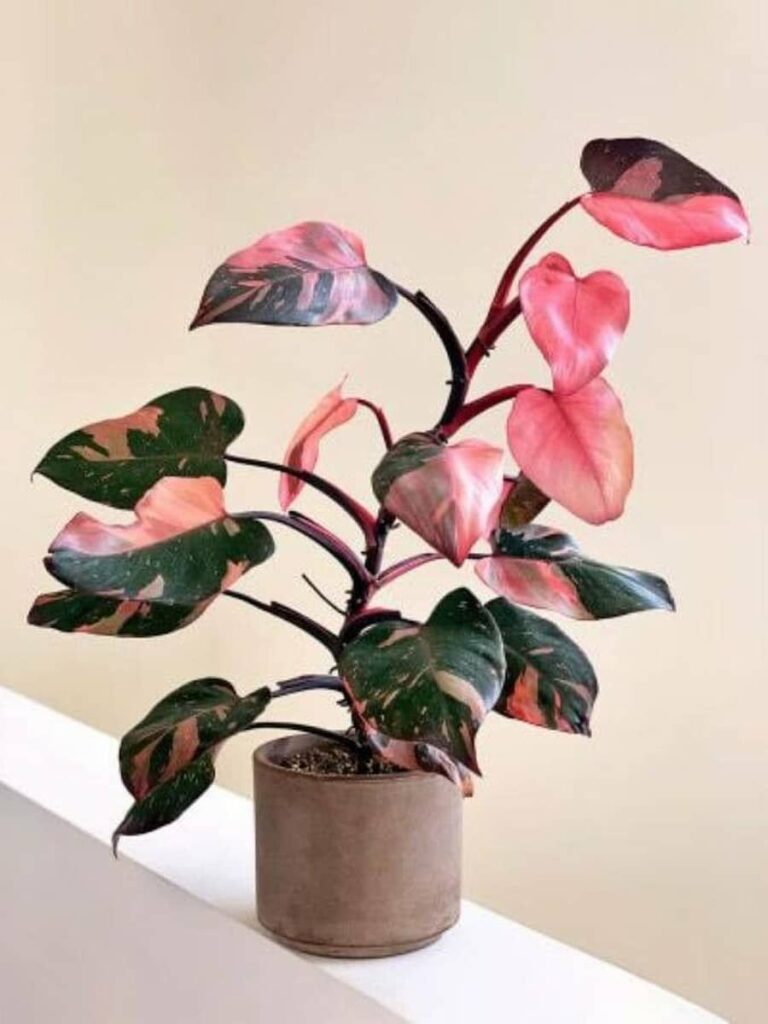
How big do pink princesses grow?
The Pink Princess Philodendron is a medium-sized variety and can reach heights of up to 4 feet (120 cm) with a spread of up to 2 feet (60 cm). As it grows, its leaves become larger, and at full maturity, they are around 8 inches (20 cm) long and 5 inches (12 cm) wide.
Although most hybrid plants, especially those that are highly variegated, end up remaining quite small, the Pink Princess is remarkably statuesque. It should reach full maturity between 3 and 5 years.
Of course, much of this depends on its care, as the Princess is only likely to get to full size if it is properly maintained.
But when it does, it is well worth the wait. This gorgeous plant has a climbing growth habit that will see its pinkest leaves congregate near its tallest point, where it receives the most light.

At a glance, it looks like it has had a tub of bubblegum-pink paint poured over it, splattering down gently to its low-growing foliage. It’s really no surprise this beauty is as popular as it is.
Is the pink princess philodendron hard to grow?
The Princess is not hard to grow once established (low maintenance to a tee), but it is hard to produce or propagate, as mentioned earlier in this article. Indeed, a Pink Princess Philodendron cutting is especially tricky as you have no assurance that its variegation will follow through.
Provided you supply your philodendron with sufficient light, water, humidity, and nutrients, you should have no trouble helping it thrive.
Is the pink princess philodendron slow-growing?
This unicorn of the plant world is not considered a fast grower; even though what it lacks in speed, it certainly makes up for in looks. That said, the reason for this growth habit is directly related to its color.
To elaborate, its highly variegated leaves contain considerably less chlorophyll in the pink parts than in the green parts, meaning there are fewer plant cells converting sunlight into energy at any given point.
The amount of energy a plant converts daily impacts the speed at which it produces new growth and the rate at which it upsizes in general.
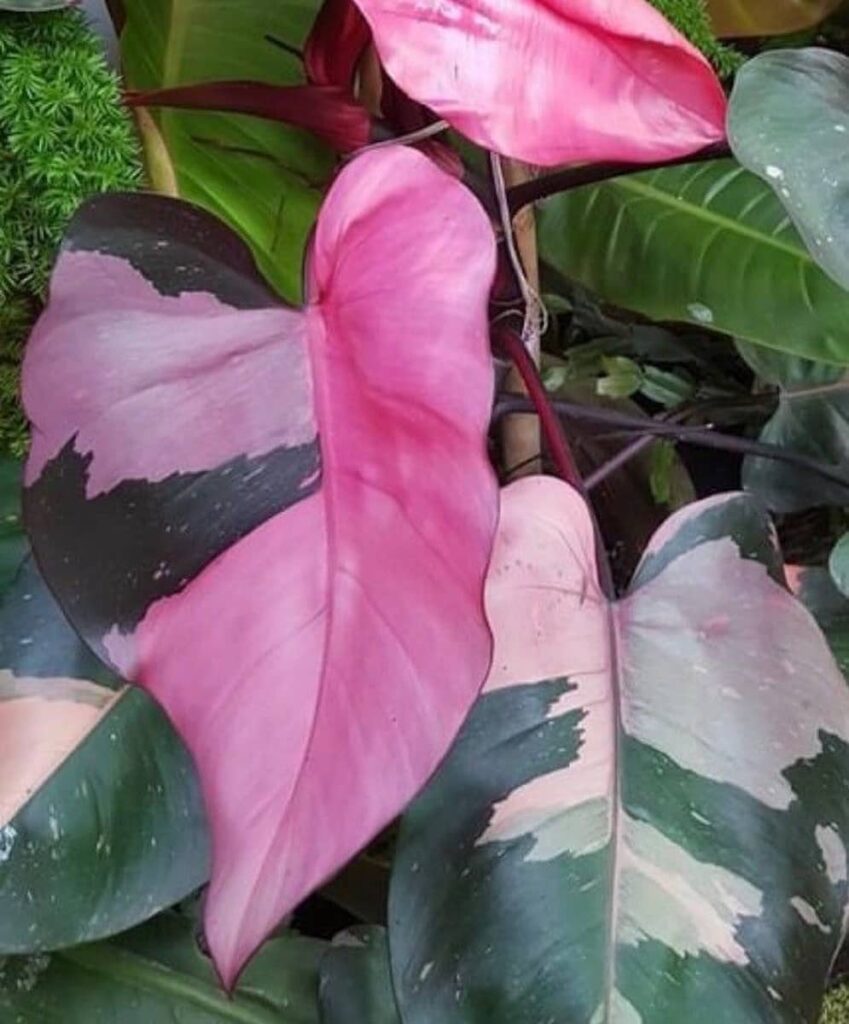
How to propagate a philodendron pink princess
The easiest way to propagate your Philodendron Pink Princess is to root it in water. Simply place your cutting into a jar with water in it and place it in a warm sunny spot, and wait. Refresh the water once a week to keep it oxygenated and, in six to eight weeks, new roots will appear.
At that point, your Philodendron Pink Princess cutting will be ready for transplantation!
Philodendron Pink Princess can be propagated from stem cuttings, provided they have a visible node and a leaf or two to draw in moisture from the air. You can either root your cuttings in water first or plant them directly into soil.
Alternatively, if you only have a small piece of stem, you can try to root them in a nutrient-rich growing medium with concentrated humidity.
That is, a second option is to place your cutting directly into a planter with soil. This is slightly riskier as they require a lot of humidity to make up for the moisture they’d usually draw via roots, but it can be equally effective with proper care.
If your cutting has no leaves, try laying it on a bed of peat moss and covering the tray or container with plastic to retain humidity. While this method isn’t always effective, it’s worth a try to avoid throwing away any pieces of your precious plants.
Find out more: 10 Easy Steps to Propagate Philodendron Cuttings
How do you keep a pink princess philodendron pink?
The trick to keeping a Pink Princess pink is ensuring ample bright but indirect sunlight for at least 8 hours daily. If this amount of sunlight is unavailable, you can supplement this with grow lights. It’s also advisable to ensure the humidity in its growing environment is around 65%.
Most collectors are after the Philodendron Pink Princess precisely because of its luminous coloring, so it can be very distressing if it fails to show its stripes. For established Pink Princesses, the primary reason why this happens is an inadequate source of light.
Without enough sun, the existing chlorophyll cells in the green areas of your plant will work overtime to keep up a viable energy supply. Over time, this can cause your Pink Princess to revert to solid green.
To prevent this, you must ensure your Princess has at least 8 hours of indirect (but bright) light daily. Most of us know this isn’t always possible, in which case, I recommend investing in some low-wattage grow lights that can supplement the deficit and keep your Philodendron as pink as possible.
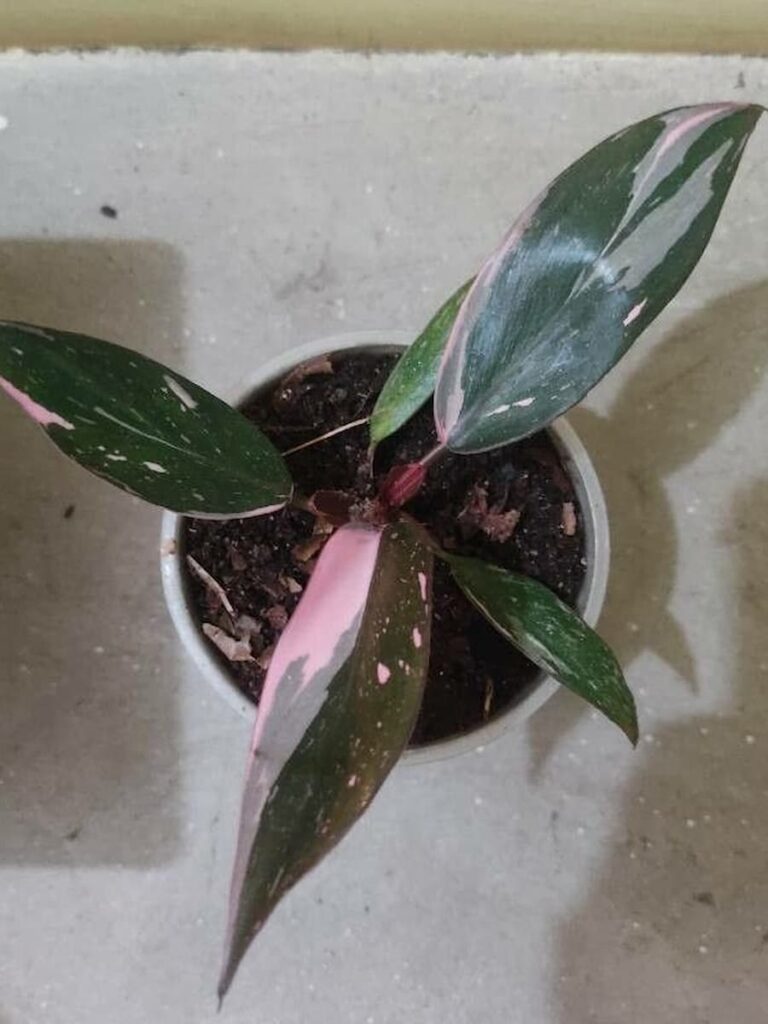
Humidity also plays a role in the development of healthy new growth, tissue, and cells. To give your Pink Princess its best chance of thriving foliage, add a humidifier to the area where you keep your plants or rest your Princess on a damp pebble tray for a kick of extra air moisture.
Why is my pink princess philodendron turning white?
If your Princess starts turning white, it may be suffering from scorching or sunburn, which essentially bleaches it from bubblegum to cream. While the Pink Princess needs a lot of sun, an excess thereof can also be damaging, especially to the delicate pink variegation on its leaves.
Ever heard the expression: “too much of a good thing?” Well – this is a classic example of that.
Fortunately, this is easily preventable by keeping your beautiful Pink Princess away from hot, direct light. A little white won’t hurt (other than aesthetically), but in the long term, it can cause leaves to wilt and die, starting with the most variegated ones.
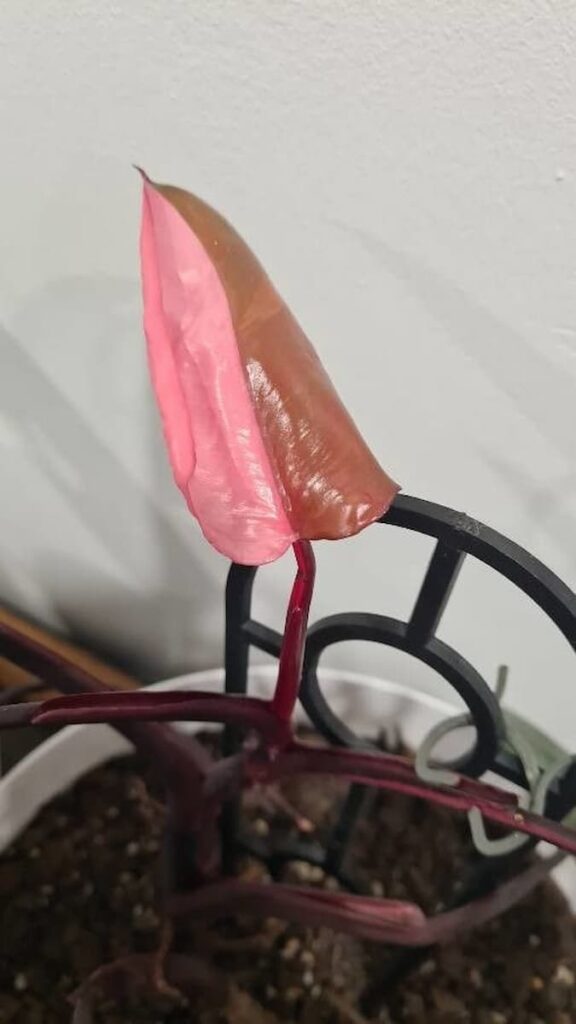
Why is my pink princess philodendron turning green?
A lack of light can negatively impact your Pink Princess’ color, causing the parts with green cells to dominate. With its unstable variegation, Pink Princesses can revert to solid green, so move your plant to a brighter spot if you notice a lack of pink in new leaves.
Why is my pink princess philodendron not pink?
There are two primary reasons why a Pink Princess Philodendron may not be showing off its signature color. The first is related to a lack of sunlight, causing it to revert to solid green. The second reason may be connected to an issue during production, for example, if there was not enough variegated DNA transferred during propagation.
Although the Philodendron Pink Princess is considered pretty unfussy, it can be an absolute diva when it comes to sunlight. We already know this is an integral part of keeping it pink, and failure to do so usually leads to reversion.
The second cause of a Pink Princess’s color deficit is slightly more complex and often occurs during propagation.
If you’re growing a juvenile plant from a Pink Princess Philodendron cutting, it could be as simple as a lack of tissue cell transfer. Or, in simpler terms, the pink gene hasn’t been passed on.
The same is true for lab-bred Princesses, which, despite best efforts, don’t always come out with variegation, even if they are marketed as such.

Can a reverted pink princess philodendron turn pink again?
If your Pink Princess has reverted to green, the good news is that this can be undone. Established Princesses (i.e., those who have already shown a crop of bubblegum leaves) can recover and become variegated once again, so long as the lighting in their environments is adjusted – sooner rather than later.
To further speed up this process, consider pruning back a few of your plant’s freshest solid green leaves. This may help it to develop new growth that (fingers crossed) should be more colorful.
What is a reverted pink princess philodendron called?
Throughout the plant world, reverted Pink Princesses are charmingly referred to as ‘Burgundy Princesses.’ This sweet moniker is a nod to the dark reddish-pink color the Princess takes on once its signature blush mixes with green chlorophyll pigment.
How much light do variegated philodendron pink princess need?
Variegated Philodendron Pink Princess have slightly different light requirements to normal, pure green Philodendron Pink Princess due to a lack of chlorophyll in the lighter parts of their leaves. It is paramount that they receive at least eight hours of indirect light daily (and up to ten), which will keep them energetic for new growth.
In the plant world, variegation refers to leaves with more than one color, either a lighter green or gray shade or a bright cream or white.
A leaf’s green coloring is a consequence of chlorophyll cells, so it follows that the lighter the color, the less chlorophyll is present. Biologically, it is these cells that plants use to convert sunlight into energy via the process of photosynthesis.
Therefore, variegated Philodendron Pink Princess have fewer cells for energy production, which is why they require just a bit more light than average. In general, being close to sunny windows with all-day light will suffice, but if you can’t provide this, you can supplement their needs with grow lights.
Another option is to place your variegated Philodendron Pink Princess outdoors in a shaded spot for a few hours a day, especially in the winter sun, to compensate for any deficits. Just make sure to keep them away from direct light (so they don’t contract sunburn), as well as from wind and rain.

How can you tell if a philodendron pink princess is real?
The easiest way to distinguish the legitimacy of a Philodendron Pink Princess is to look at its variegation. Typically, the swathes of color appearing on the leaves of a Pink Princess are no more than half or two-thirds of the entire surface area of a leaf and occur in crescent moon shapes.
Sadly, scammers exist – even in the world of houseplants. And one of their favorite things to do is pull the wool over the eyes of enthusiastic collectors.
For this reason, it’s good to know from the get-go how to identify if a Philodendron Pink Princess is real. This is especially pertinent considering their sale price.
To start, they have the typical, heart-shaped leaves of more common philodendron species, which culminate in a delicate tip. As vining plants, you can expect several leaves on a thickish, strong stem, which often has a burgundy tinge to it.
Finally, and most indicative, is their variegation itself. A Pink Princess is known for its bubblegum pink coloring, which makes it as unusual as it is beautiful.
However, it will never fully color a leaf, as this would leave no room for chlorophyll cells, which it requires for energy production (ergo, growth). Instead, pink streaks occur at random, close to the edge of each leaf, seldom taking up more than two-thirds of its entire surface.
If your Pink Princess ticks all these boxes and costs a pretty penny, the chances are high that it’s real.
Philodendron pink princess marble vs pink princess
The standard Pink Princess and the Marble Pink Princess are essentially the same plant, but with minor differences in the patterning of their variegation. The crescent moon coloring most commonly found on the Pink Princess is called ‘Sparkle’ and is usually accompanied by spots or dots of lighter pink and white.
The Marble Pink Princess, on the other hand, is even rarer than the standard and has a beautifully marbled variegation, as its name suggests. Instead of specks and spots, there are light and dark swathes of pink that look like watercolor paint.
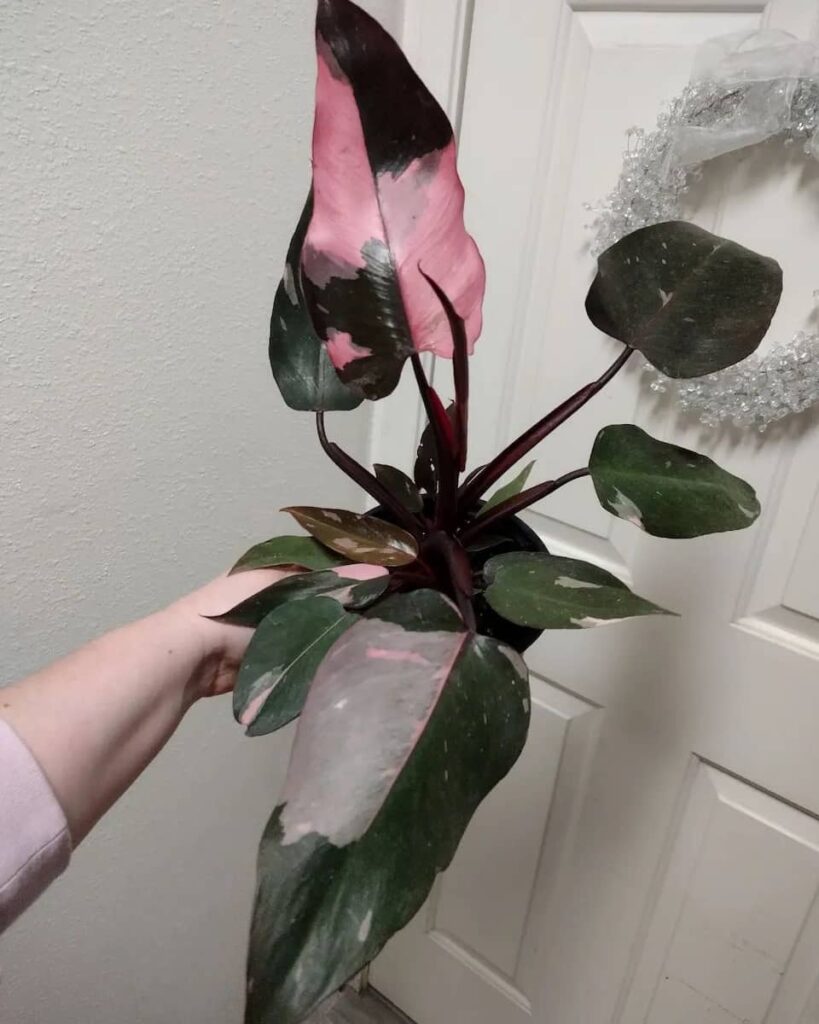
Philodendron pink princess vs pink congo
Where the Philodendron Pink Princess is a registered, albeit lab-bred, variety of philodendron, the Pink Congo is wrapped in controversy. The latter is a chemically manipulated specimen of a standard philodendron that has been altered to boast showy, entirely pink leaves.
Naturally, the leaves of the Pink Congo cannot survive indefinitely, as they have no chlorophyll and produce no energy. Instead, they eventually die back, leaving collectors with a solid green plant with no chance of creating new variegation.
What is so special about a pink princess philodendron?
What sets the Philodendron Pink Princess apart from its various cousins is its striking variegation. Where plants with pink striping are usually light in color all over, the bubblegum pink of the Princess rests against a deep, dark green background, often confused with black or burgundy. This makes it a true standout among its peers.
If you’re looking for a type of philodendron that will make guests and friends stop for a second glance, look no further than the Philodendron Pink Princess. Pink variegation is rare at the best of times, but even more so when it contrasts so deeply with the rest of its foliage.
Add this to the fact that the Princess is challenging to come by, and you have a collector’s item through and through. Even though this beauty has been on the market for years, its scarcity and difficult production make it special in every sense of the word, with enthusiasts paying nifty prices to get hold of them.
Is the pink princess philodendron rare?
Though less so than before, the Pink Princess is still considered rare, and you won’t find it in your local garden center or nursery. Most often, exchanges of this beauty happen through specialist suppliers or online merchants.
The reason for this lies in how it is produced. Most commonly, the Pink Princess is developed in tissue labs, which currently cannot keep up with demand.
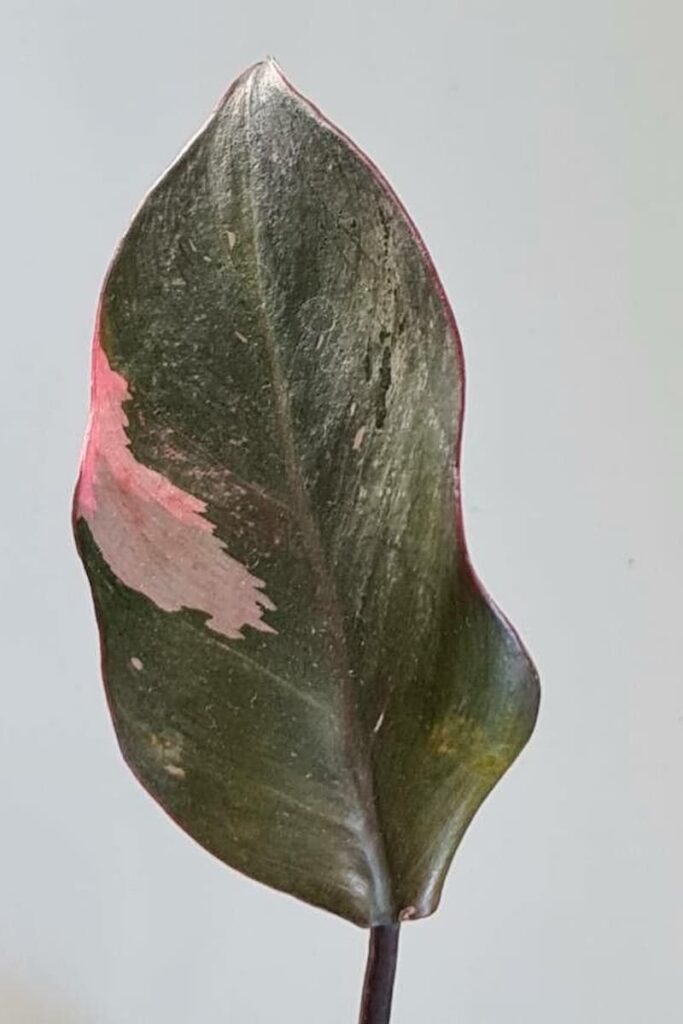
How do you make a philodendron pink princess bushy?
The best way to make a Philodendron Pink Princess bushy is to prune it in its growing season, which is spring and summer. Make sure you remove any dead or dying leaves, as this ensures your plant doesn’t spend energy on this foliage and will instead focus on new growth.
Funnily enough, regularly trimming your plant is actually key to maximizing your philodendron’s growth rate.
Regularly turning your plant so that all its angles receive sunlight is another good way to ensure consistent, rounded, and aesthetic growth with a clustered appearance to make your philodendron fuller.
You can also use a moss pole so that your Philodendron Pink Princess has space to climb upwards, which is what it would do in its natural environment – aiming upwards towards a source of light.
Are philodendron pink princess toxic?
Philodendron Pink Princess are toxic to humans and animals, as they contain sharp calcium oxalate crystals that cause skin irritation through direct contact, or gastrointestinal distress and other potentially dangerous symptoms when ingested. All parts of the plant contain these crystals, which are most prevalent in its sap.
While Philodendron Pink Princess are indisputably beautiful in the home, it is best to keep them away from curious kids and pets, as skin contact and ingestion can be highly irritating at best and have real health consequences at worst.
These plants’ sticky white sap is full of needle-like calcium crystals. When they make contact with bare skin, they can cause welts or irritating rashes, which, fortunately, can usually be treated with a topical skin ointment.
Be aware: Ingestion of any part of a Philodendron Pink Princess can cause swelling of the throat tissue, nausea, dizziness, diarrhea, and other symptoms of gastrointestinal distress. In a worst-case scenario, ingestion can cause difficulty breathing, in which case, medical treatment should be sought as a matter of urgency.
While this all sounds very daunting, the good news is that these plants don’t taste good, so there is no real reason (other than curiosity or carelessness) why rogue children or pets would eat them. Even so, prevention is better than cure, so place your plants out of reach if you’re concerned they may get chomped.
Why are my philodendron pink princess’ leaves turning yellow?
There are a few reasons why Philodendron Pink Princess leaves turn yellow, but the primary cause is overwatering, with yellowing leaves being an early sign of root rot. Damaged roots cannot transport nutrients, oxygen, and water to a plant’s leaves, which causes cell death, and by default, turns them yellow.
I find watering my plants to be the most cathartic exercise on earth. However, with some trial and error, I’ve learned that my Philodendron Pink Princess, in particular, doesn’t do well with being over-loved.
While they’re super hardy, too much hydration can quickly cause root rot in philodendrons – a fungal or bacterial infection that destroys your plant’s root system.
Therefore, if you notice yellowing leaves on your philodendron, run a diagnostic immediately. Is your soil damp or soggy? Allow it to dry out, which may reverse some of the damage. Lots of sun helps. Or if the damage is progressed, try repotting your Philodendron Pink Princess, removing damaging roots in the process.
A secondary cause of yellowing leaves is chemical burn, which your Philodendron Pink Princess may contract from over-fertilization. In this case, transplantation is also recommended, followed by a restriction of your feeding practices.
Why is my philodendron pink princess drooping?
Drooping and wilting in Philodendron Pink Princess is more often than not related to watering practices. Too little water can cause fatigue which will make your plant look droopy, while too much water (or root rot) can also cause ill health. Generally, when a plant wilts, it is trying to communicate that it’s unwell.
While a drooping Philodendron Pink Princess is distressing, it’s not usually terribly serious and most likely due to dehydration. This can be solved with a dose of water and sunlight and, of course, more consistent care going forward. In no time, your plant should be back to its old self.
Conversely, if this doesn’t do the trick, your philodendron leaves curling may indicate an underlying issue like root rot, which, ironically, is caused by overwatering. If you suspect this is the case, you may be best off transplanting your Philodendron Pink Princess into fresh soil and readjusting your watering schedule.
A third cause of drooping is related to light. If a Philodendron Pink Princess isn’t receiving enough sun, it will tell you by dropping its leaves and wilting. Remember, six to eight hours a day is critical, and if you can’t provide this, mitigate potential drooping with supplementary grow lights.
Related: 10 Causes Of Your Philodendron Not Growing (+ How to Fix It)
Why are there brown spots on my philodendron pink princess?
Like yellowing and drooping, brown spots on a Philodendron Pink Princess are a sign of a health ailment. Browning, in particular, is mainly caused by pest infestations or bacterial and fungal infections. The best way to get rid of brown spots is to identify the cause and then treat your plant accordingly.
None of us want to see our Philodendron Pink Princess suffer, and brown spots usually aren’t a very good sign. If you notice your philodendron leaves turning brown, the first thing you want to do is identify the cause, whether it be pests or soil-related.
In the case of creepy crawlies, you can treat your Philodendron Pink Princess by washing it down with a horticultural soap, followed by a wipe with neem oil. Remove damaged growth, and give your plant lots of love, water, and light.
On the other hand, bacterial and fungal infections are best treated by getting rid of old soil. I highly recommend transplanting your Philodendron Pink Princess (preferably in spring or summer), and cutting away any visible root and leaf damage, provided it’s not more than 30% of your plant’s total volume.
Brown spots on philodendrons can also be caused by sunburn, but in this case, they’ll look more like a sheen than a spot, per se. Sunburn can be prevented by keeping your Philodendron Pink Princess out of direct light.
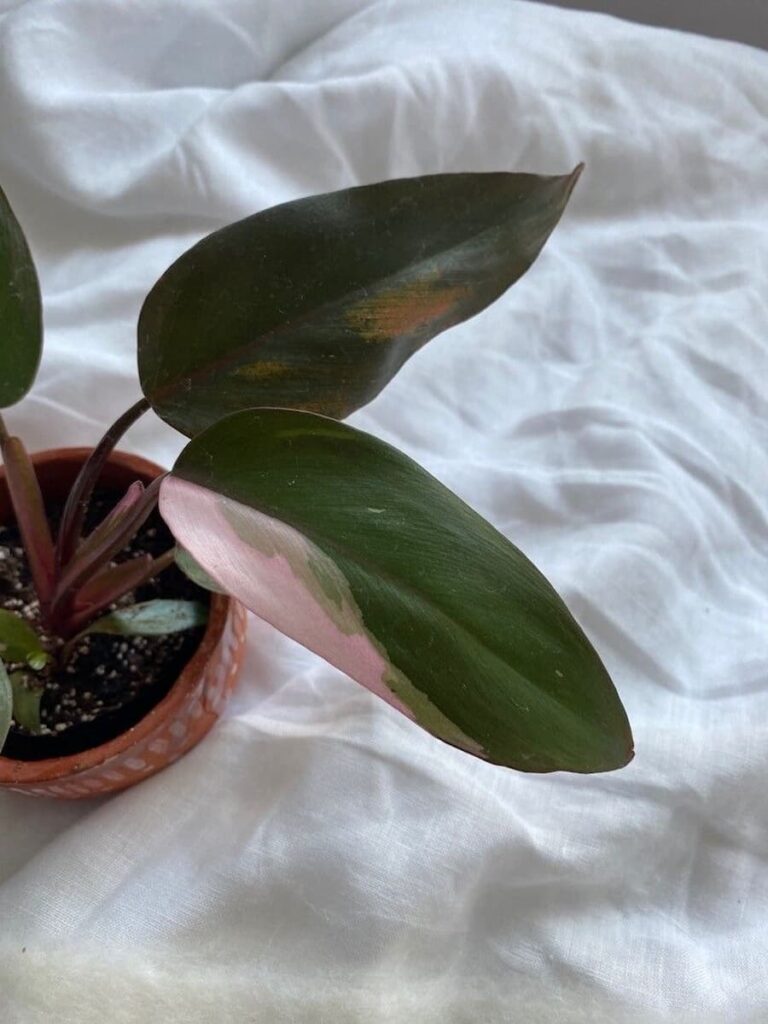
Why are my philodendron pink princess’ leaves falling off?
When a Philodendron Pink Princess’ leaves start to drop, it is more often than not a sign of either overwatering or underwatering. Root rot, a consequence of too much water, can cause leaves to wilt, curl, and fall. Underwatering, conversely, sees them dry and turn crisp before dropping.
Pink Princesses are great communicators and will tell you when there is something in their environment they don’t enjoy. As hardy plants, they don’t have many health issues, so any sudden onset of leaf drop is a cause for immediate concern.
As mentioned, this is usually related to watering practices, with the first sign of an issue being wilting, curling, or dried leaves. You should adapt your hydration timeframes accordingly.
If watering is not the problem, it may be that your Pink Princess is scorching (you’ll note its leaves start turning pink), in which case you should move it to a shadier spot as soon as possible.


